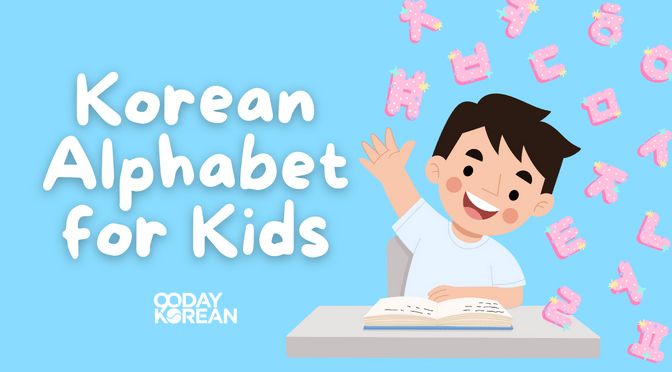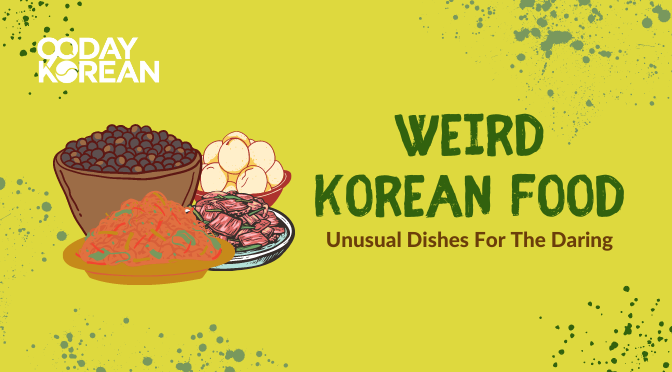In this article, you’ll learn everything there is to know about learning the Korean alphabet for kids.
We already have a useful article for general learning of Korean for kids, but today, we’d like to specifically go over how to make learning the Korean alphabet for kids quick and fun. These tips can also work for you, even if you are older, but they have been written with the younger members of society specifically in mind.
Contents
Introduction
Naturally, if one or both of the parents have cultural and/or ethnic roots in Korea, it is an easy decision to have your kid learn some Korean from a young age as well.
But what if there is no direct connection to Korean culture and language? Learning a foreign language is beneficial either way. We are headed for a more globalized environment all the time, but language learning is also great for cognitive development.
And right now, among all the languages in the world, Korean is considered a trendy one to learn. At first, it may leave you wondering whether that is enough reason to learn a language that seems relatively small in terms of amount of speakers. But with the popularity of Korean music, dramas, and more on the rise, the number of Korean speakers also appears to be increasing.
In this article, you can find resources for what to teach your children, all of which can be used in ways that your child will enjoy what they will be learning.
The Korean Alphabet, Hangul
The Korean language has its own unique alphabetic system called Hangeul (한글). The Korean alphabet system may seem intimidating at first, but actually, it is quite easy – and fun! – to learn. You can use our article on the Korean Alphabet as the base material for learning the alphabet.
The Structure of Hangul: Vowels and Consonants
To offer your child the best Korean lessons available, it is good for you also to have some knowledge of the language if you don’t already. However, by going through the material we’re offering here, you’ll also learn so much about the basics of Korean.
Hangeul is made up of 14 consonants and 10 vowels. We have separate, comprehensive articles for both Korean Vowels and Korean Consonants. Before anything else can be taught about the Korean language, you and your kid need to know the alphabet.
However, this can be done in many fun, different ways! For example, you can purchase and use Korean alphabet toys or use modeling clay so that the children can create each letter themselves. In addition, your child may really enjoy going through a Korean alphabet song as a way of memorizing the characters.
You can move on to the more challenging alphabet portion when the basic alphabet has been learned. This means complex vowels as well as double consonants. You can also find all the information for these in the articles for Korean vowels and Korean consonants. There is still plenty more to learn about consonants, but it’s good to go step by step so the young learner won’t get overwhelmed and confused.
The rules for writing Hangul correctly
Once your child can remember all of the Korean letters, you can move on to the next topic. Learning the alphabet should not take longer than an hour or two, so in the next class you can already do this next thing: the hangul stroke order.
We have an article on hangul stroke order, which can once again work as a great base material to create a lesson out of. While learning stroke order may sound unimportant at first, it can be a lot of fun to learn. For example, the stroke order can be practiced through calligraphy or other kinds of drawing exercises.
How the consonants and vowels are combined to form syllable blocks
Now that you know all of the alphabet and their stroke order, you can start learning how each letter is combined into syllable blocks. Let’s look at the verb 공부하다 (gongbuhada), for example. Each character creates a block with 2 to 3 characters, and then these syllable blocks together form words. We have a great article you can use to learn how to create Korean syllable blocks.
Here is where you can also teach about the difficult concept of 받침 (batchim). This refers to those consonants that finish off a syllable block. It can be a singular consonant, such as ㅇ, in the above sample verb. However, they can also be more complex than this, such as ㄺ, so two consonants are squeezed into one. Feel free to take your time with this, as it may feel confusing to go over at first.
Practice Writing Hangul
Now that all the consonants and vowels are familiar and the basics of stroke order and syllable blocks have been learned, the focus can be shifted to practice writing full words and, eventually, sentences.
Tips and techniques for learning how to write in Hangul
There are a few different ways that your little one can learn and practice writing in Hangul.
Mnemonic Devices
For example, your kid may enjoy memorizing through mnemonic devices, such as creating songs and rhymes. For visual aids, you can use all sorts of things like pictures, videos, and flashcards.
Repetition
You can also search for some sample words to use for repetition. Preferably, a few words start with each consonant in the alphabet, including those that begin with ㅇ. Some words can be long, while others are short, and they can even be similar to one another.
It is even better if they are connected to your home or daily life. Once you have collected these words, you can create a Korean song game of sorts. This will not only help memorize some essential words but also give the child an opportunity to better understand the sounds the letters make.
Common mistakes to avoid when writing Hangul
Learning a new language can be challenging, but you can make it easier if you are able to avoid mistakes learners usually make early on. Here are some of them.
Not using the Hangul stroke order
Perhaps the most common mistake made when writing in Hangul is ignoring the stroke order. It is not the end of the world, as each of us has our own unique handwriting, even in Korean. However, sticking with the stroke order will make the letters easier for others to read. Especially ㄹ and ㅁ are letters where stroke order is often ignored.
Aiming for perfection
Also, it is important not to stress too much or aim for perfection too much. Instead, it’s good to keep learning light enough that it’s still enjoyable. We all make mistakes while learning, and there is no reason to be so hard on yourself when you do make one.
Not learning the Korean alphabet
The biggest mistake you could make, however, is skipping the step of learning the Korean alphabet altogether. That means learning Korean through romanization instead. But whilst romanization is a handy tool to use in supporting your studies, it is most important to learn Hangul properly and right away. The alphabet is simply the best place to start learning Korean.
You will also want to be consistent with the learning, especially at the start. Even if the child picks up the alphabet quickly, they will have forgotten it if the next lesson is a month away or something. It can also lead to losing motivation toward learning.
We actually have an article about common mistakes made while learning Korean that are good to keep in mind when progressing past the alphabet to more topics.
Exercises and worksheets for practicing Hangul writing
Worksheets may also be incredibly useful for helping the little one – and why not the adult also – practice writing Hangul. Start off with a worksheet for the Korean alphabet. Next up, there are also separate worksheets available for vowels and consonants.
Additionally, we also have a worksheet dedicated to Hangul stroke order. We also have one for writing in Korean in general.
And, if you would like some more exercises to do? For example, Amazon offers great options to cover that. Here is a book with 72 Hangul worksheets specifically geared for kids. And here is a handwriting workbook for the Korean alphabet, also made with young learners in mind. You may also get inspired enough to create your own worksheets to practice writing and memorizing Hangul.
As long as the worksheets have been made for young learners, they will surely have fun filling them out.
Beyond just the alphabet, we have numerous worksheets available for you to utilize in your or your child’s Korean studies.
Fun Ways to Learn Korean Alphabet
It is also true for adults, but even more so for children, that learning should be fun. Something great about learning languages is that, especially in the beginning, they can be so much fun for a child to learn.
In the case of learning the Korean alphabet, it is easy to make memorizing them fun. To start off with, try incorporating the language with everyday activities, especially playtime. As was mentioned above, songs are a great way to memorize the alphabet and even some words and your child would likely enjoy reciting them.
You can also turn the alphabet into craft. How about having your child draw each letter of the alphabet? Make flashcards out of them, too, and then utilize them as a memory game. You can also use something like Play-Doh to create the alphabet letters. If you have both, you can even play a game where the task is to match the letter on the flashcard with the play dough letter.
And, when your child is ready, those play dough letters can also be used to create words. They can also make drawings and then include the Korean word for the drawing’s subject in the drawing. Additionally, using calligraphy may be one enjoyable way to memorize or teach Hangul letters and simple words.
Recommendations for Korean language children’s books, movies, and TV shows
In addition to games and crafts, children will also enjoy learning the language the same way many adults do: through media.
Learning Korean through books and cartoons
A child may enjoy practicing Korean skills through books and cartoons. We have a list of Korean children’s books that any child would like to read. They are a step further than just learning the alphabet, but they are not that complicated once you’re ready for it. Other written resources available are Korean comics and webtoons, but these are often geared towards an older audience.
There is also a great textbook series called My First Korean Words Series. It consists of three books, with one book focused specifically on the alphabet, while the other two teach basic and essential words. This series is specifically geared towards children and heavily uses pictures as teaching guidance. With this series, your child will learn the alphabet and also their first 300 Korean words.
Learning Korean through songs and videos
Then, for listening practice, you can use songs, TV shows, and movies. For TV shows and movies, you can find Korean series and movies geared for children. Or, if possible, you can also use something already popular with your child and turn on Korean dubbing or subtitles.
For example, Pororo and Tayo the Little Bus are incredibly popular children’s animations in South Korea. You can find both of them on Netflix. You can find them – and more – on YouTube, as well.
Unfortunately, there are not that many famous Korean children’s movies, but just turning on a movie such as Frozen with Korean dubbing will do. In fact, it may even be better, as the content of the movie is already familiar to them.
For material specific to the alphabet, you should check out Hello Carrie Hangul. It is a fun and educative channel geared for kids, with a focus on teaching the different alphabet letters. There a multiple videos available, all short in length, so there isn’t too much information being pushed out at once.
Tips for finding a Korean language tutor or class for kids
Also, of course, you don’t need to do all the teaching yourself. If you want to learn Korean together with your child, that’s an awesome idea. However, if you want them to be taught by a professional, that’s an excellent idea as well.
In that case, you may want to consider finding a language tutor or even a group class. Before you start your search, spend a moment figuring out the goal of language learning. This will help tremendously, as different tutors and classes focus on different things. There are also different teaching methods, with some offering more speaking-based classes while others follow a textbook format more closely.
And, if at all possible, do try out a trial lesson before a longer commitment. You will want to know if the tutor is the right fit for your child first, after all. You will also want to find a tutor that has the qualities of a good teacher and is focused on teaching material that is useful in real life. You must also consider your timetable and time zone when searching for a tutor.
We have an article on finding Korean tutors for more information if you’d like to read it through. If you are searching for a group class, the process is quite the same as hiring a private tutor. Also, in both cases, do remember to think about what kind of budget you have to work with.
We also offer our own online Korean course. If it aligns with your goals and budget, it can be one worthwhile option to check out if you’re looking for a tutor for your child.
Conclusion
Above, we have laid out the many great ways and resources with which your child can start to learn the Korean alphabet. Language learning is good to start at a young age when our brains are able to retain that kind of information with ease. However, we also have to keep in mind that we need to make learning engaging and motivating for the kids.
Finally, if you are still hungry for a little more material, we have a guide for Korean language learning resources here. It has all you need to get a child’s study journey started, from the Korean alphabet for kids to full sentences!





